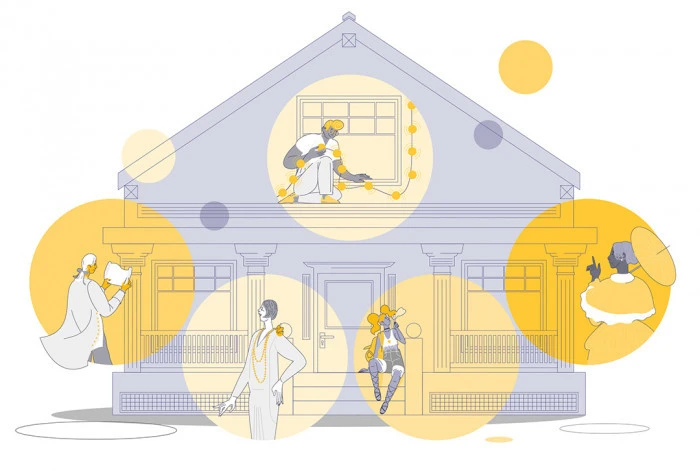Share what you know,
and discover more.
Share what you know,
and discover more.
Feb 01, 1983

-

- Charmaine Bantugan
National Register of Historic Places - Anders Hintze House
Statement of Significant: The Anders Hintze house in Holladay is significant as an example of H Scandinavian vernacular architecture in Utah. The house contributes J historically to the thematic nomination, "The Scandinavian-American Pair-house in Utah." Additionally, the Hintze house remains as one of the few homes i n the Salt Late Valley dating to the 1860s. Anders Hintze was born in 1821 in Herslex, Roskilde Parish, Denmark. Hintze converted to the LDS Church in the late 1850s and emigrated to Utah in the early 1860s. Arriving in Salt Lake City, Hintze received a land grant which extended from 3900 South to 4500 South and from 2300 East to 2700 East. A farmer by trade, Hintze prospered and eventually married three wives. Despite the large size of the home, only one wife, Karen Sophie Swenson, lived in the main house. The other wives occupied smaller houses located on the family property. After Anders Hintze’s death in 1888, the house passed to his son, Ferdinand. The yourger Hintze married four wives and held the dubious honor of being the first mormon arrested under the provisions of the Edmunds Act (anti-polygamy) in 1882.
National Register of Historic Places - Anders Hintze House
Statement of Significant: The Anders Hintze house in Holladay is significant as an example of H Scandinavian vernacular architecture in Utah. The house contributes J historically to the thematic nomination, "The Scandinavian-American Pair-house in Utah." Additionally, the Hintze house remains as one of the few homes i n the Salt Late Valley dating to the 1860s. Anders Hintze was born in 1821 in Herslex, Roskilde Parish, Denmark. Hintze converted to the LDS Church in the late 1850s and emigrated to Utah in the early 1860s. Arriving in Salt Lake City, Hintze received a land grant which extended from 3900 South to 4500 South and from 2300 East to 2700 East. A farmer by trade, Hintze prospered and eventually married three wives. Despite the large size of the home, only one wife, Karen Sophie Swenson, lived in the main house. The other wives occupied smaller houses located on the family property. After Anders Hintze’s death in 1888, the house passed to his son, Ferdinand. The yourger Hintze married four wives and held the dubious honor of being the first mormon arrested under the provisions of the Edmunds Act (anti-polygamy) in 1882.
Feb 01, 1983
National Register of Historic Places - Anders Hintze House
Statement of Significant:The Anders Hintze house in Holladay is significant as an example of H Scandinavian vernacular architecture in Utah. The house contributes J historically to the thematic nomination, "The Scandinavian-American Pair-house in Utah." Additionally, the Hintze house remains as one of the few homes i n the Salt Late Valley dating to the 1860s.
Anders Hintze was born in 1821 in Herslex, Roskilde Parish, Denmark. Hintze converted to the LDS Church in the late 1850s and emigrated to Utah in the early 1860s. Arriving in Salt Lake City, Hintze received a land grant which extended from 3900 South to 4500 South and from 2300 East to 2700 East. A farmer by trade, Hintze prospered and eventually married three wives. Despite the large size of the home, only one wife, Karen Sophie Swenson, lived in the main house. The other wives occupied smaller houses located on the family property. After Anders Hintze’s death in 1888, the house passed to his son, Ferdinand. The yourger Hintze married four wives and held the dubious honor of being the first mormon arrested under the provisions of the Edmunds Act (anti-polygamy) in 1882.
Posted Date
Jun 26, 2023
Historical Record Date
Feb 01, 1983
Source Name
National Register of Historic Places
Source Website
Delete Story
Are you sure you want to delete this story?










